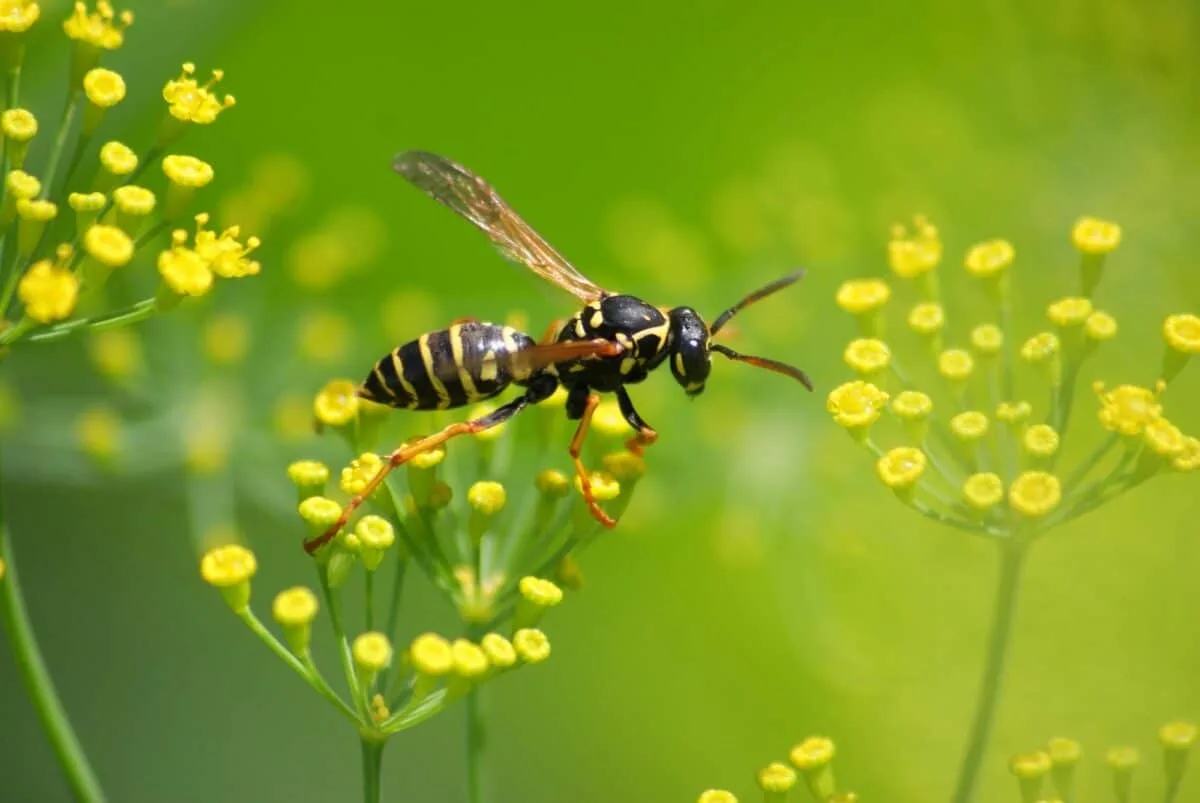Have you ever stumbled upon a strange, elaborate structure hanging from a tree or a building and wondered what it is? If you have, it’s a high chance it was a wasp nest.
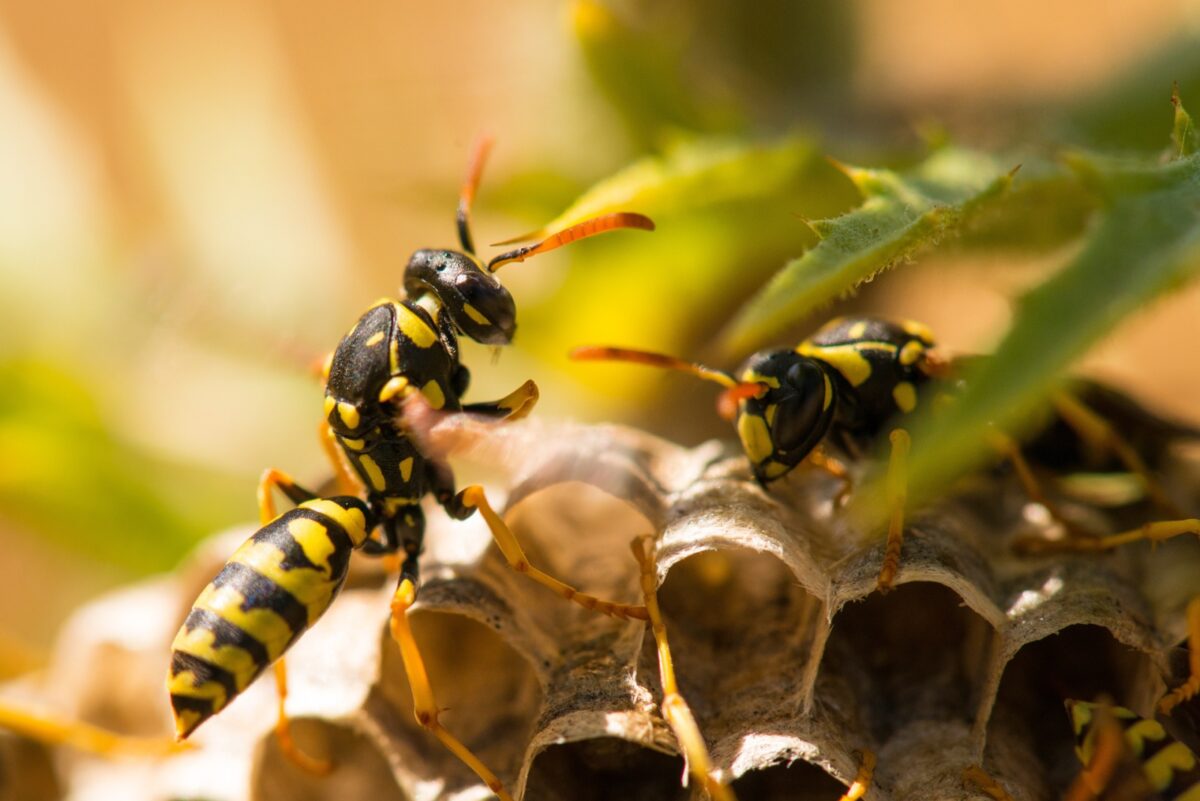
These fascinating structures are made of a material very similar to “papier-mâché,” a mixture of wood fibers and wasp saliva. They serve as a home for the wasps and are a vital part of the ecosystem.
In this article, we will explore the intricate world of wasp nests and delve into the materials used to construct them. We will also cover the process of creating the papier-mâché-like substance and how wasps use it to build the nest.
We will also investigate the different shapes and sizes which vary depending on the species. Lastly, we’ll also touch upon the significance of them in the ecosystem to understand and respect what these structures could mean for our environment.
So, keep reading with us to look into wasp nests in-depth. We sincerely hope you’ll come away with a newfound appreciation for these fascinating structures!
The Exciting History of Wasp Nests
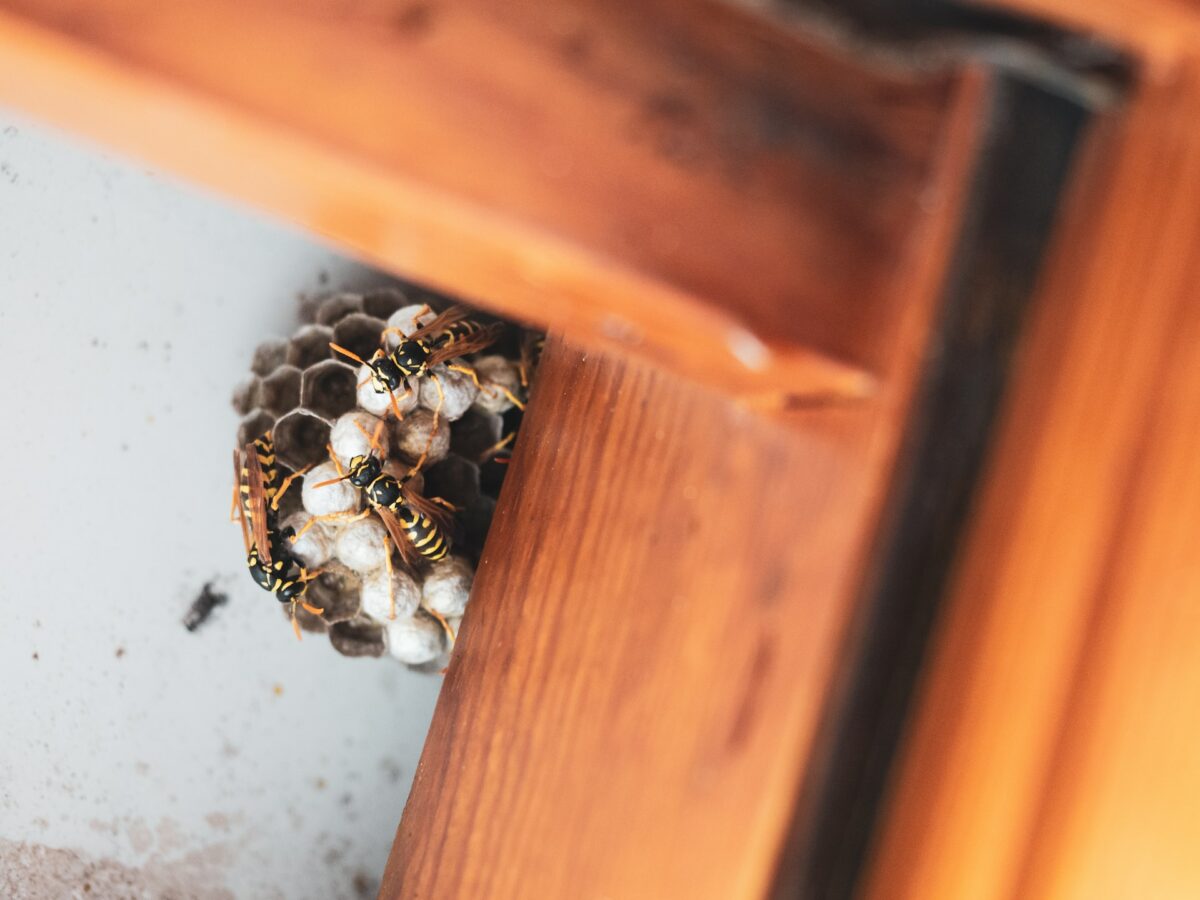
Wasp nests have been a part of our history for thousands of years, and people have always been fascinated by them. Can you blame them? These things are architectural marvels built by tiny yet highly skilled insects.
In ancient times, people were already observing wasps building nests and realizing that the nests were made of a paper-like material. They got crafty with it and started using it for various purposes.
For example, the ancient Egyptians and Greeks used wasp nests as fuel for heating and lighting.
In the Middle Ages, they were used for medicinal purposes too. People believed they had healing properties and would use them to treat pain, inflammation, and infections. They even used it to make dyes and pigments.
Fast forward to recent times, scientists began to study the unique properties of wasp nest paper. They discovered that it is more robust, flexible, and fire-resistant than regular paper.
This led to researching and finding new applications of wasp nest paper, like building materials, insulation, and filters.
People have been captivated by these structures for centuries and have found various uses for the materials they’re made of.
What Does A Wasp Nest Look Like?
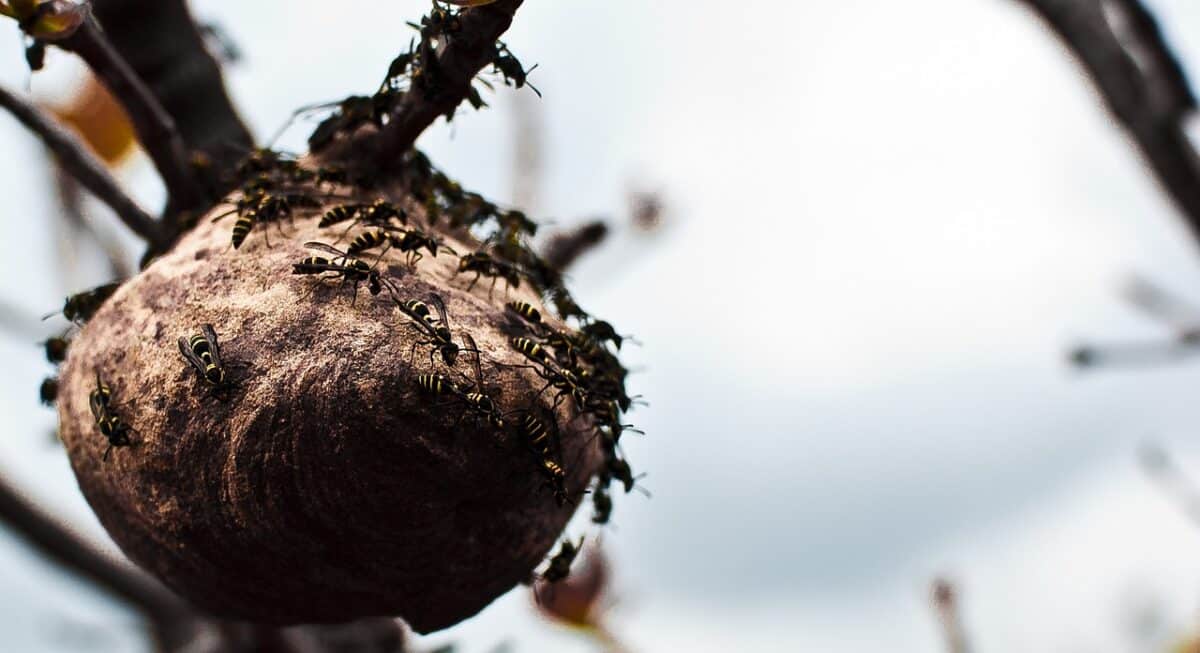
Have you ever laid eyes on a wasp nest before? If not, let me paint you a picture. Imagine a large, intricately woven structure hanging from a tree or a building. The surface is smooth and papery, almost like someone took a bunch of old newspapers and glued them together to form a giant ball.
But as you get closer, you start to notice the fine details – the layers of hexagonal cells stacked upon one another, each one perfectly symmetrical and precise. It’s a work of art – all built by wasps!
Moreover, they come in various shapes and sizes, depending on the species of wasp that built them. Some build their nests in trees or bushes, while others construct them in underground caves or buildings’ walls.
Regardless of the type of nest, one thing is for sure – they are all impressive structures that are a testament to the incredible building skills of wasps. From the fine details of the hexagonal cells to the smooth and papery exterior, they are truly a sight to behold.
So, the next time you spot a strange, elaborate structure hanging from a tree or a building, take a moment to appreciate the natural wonder of a wasp nest.
Different Types Of Wasp Nests
Now let’s dig deeper into different types of nests that exist:
#1 Paper Wasp Nest
These are the most common type and are typically what comes to mind when you think of a “wasp nest.”
They are usually found hanging from a tree or bush and are made of multiple layers of hexagonal cells. Their size can range from a few inches to several feet in diameter, and they have an open bottom.
#2 Hornet Nest
These are considered the big brothers of the wasp nest world, usually more prominent and enclosed than paper wasp nests. They are often found in trees, bushes, or even attached to the side of buildings.
They are either round or oval-shaped and made of a thick, paper-like material with a smooth and shiny surface. Some of them can be as big as a basketball!
#3 Yellow Jacket Nest
These sneaky ones like to hide underground in burrows or cavities. They can house thousands of insects and are made of a paper-like material. Although they can be hard to spot, once you find one, it’s quite the sight.
#4 Mud Dauber Nest
These nests are made of mud and are typically found on walls, eaves, or other flat surfaces. They are built by solitary wasps, different from the social wasps that build the other types of nests.
#5 Solitary Wasp Nest
They make small nests, usually in a cavity like a hollow tree, dead wood, or a hole in the wall. Because they are not social wasps, they don’t care for their offspring.
Remember, if you need clarification about the nest, it’s always better to call a professional to deal with them.
Importance of Wasps and Their Nests
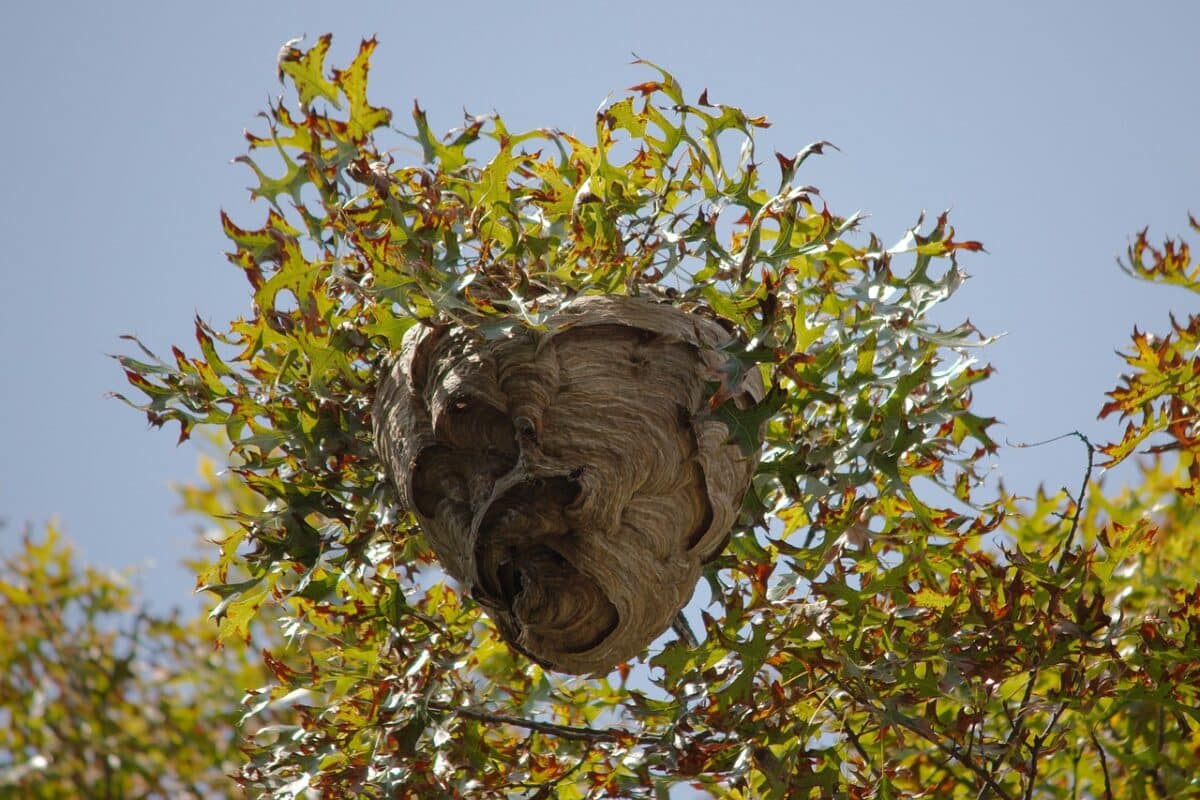
These nests play a crucial role in the ecosystem. Not only for serving as a home for wasp colonies, but also for providing critical ecological services.
One of the most significant roles of wasps in the ecosystem is their role as predators. Many species of wasps are generalist predators, meaning they feed on different types of insects and spiders. This includes many pest species, such as aphids, caterpillars, and flies.
By controlling these pest populations, wasps help to protect crops and gardens from damage. In turn, this helps to preserve the biodiversity of plants and animals in the ecosystem.
Similarly, wasps also serve as pollinators for many plants, which is especially important for plants that rely on insects for reproduction. They are known for searching the nectar and pollen from flowers and transferring pollen to other flowers.
Wasos help plants to reproduce and produce fruits, nuts, and seeds. This is a critical service for the ecosystem, as it helps to ensure the survival and reproduction of many plant species.
In addition to their ecological services, they provide shelter and nesting sites for other wildlife, such as birds, bats, and insects. Moreover, these nests can be a food source for other animals and provide nesting material for birds after their former residents abandon them.
Overall, their importance in the ecosystem cannot be overstated. They are vital in controlling pest populations, pollinating plants, and providing habitats for other wildlife.
Therefore, it’s crucial to understand and respect wasp nests and to take steps to preserve wasp populations and their habitats. This includes reducing or eliminating the use of pesticides, providing nesting sites for wasps, and protecting their natural habitats.
Doing so can help ensure the health and survival of wasp populations and the ecosystems to which they are vital contributors.
How To Identify A Wasp Nest?
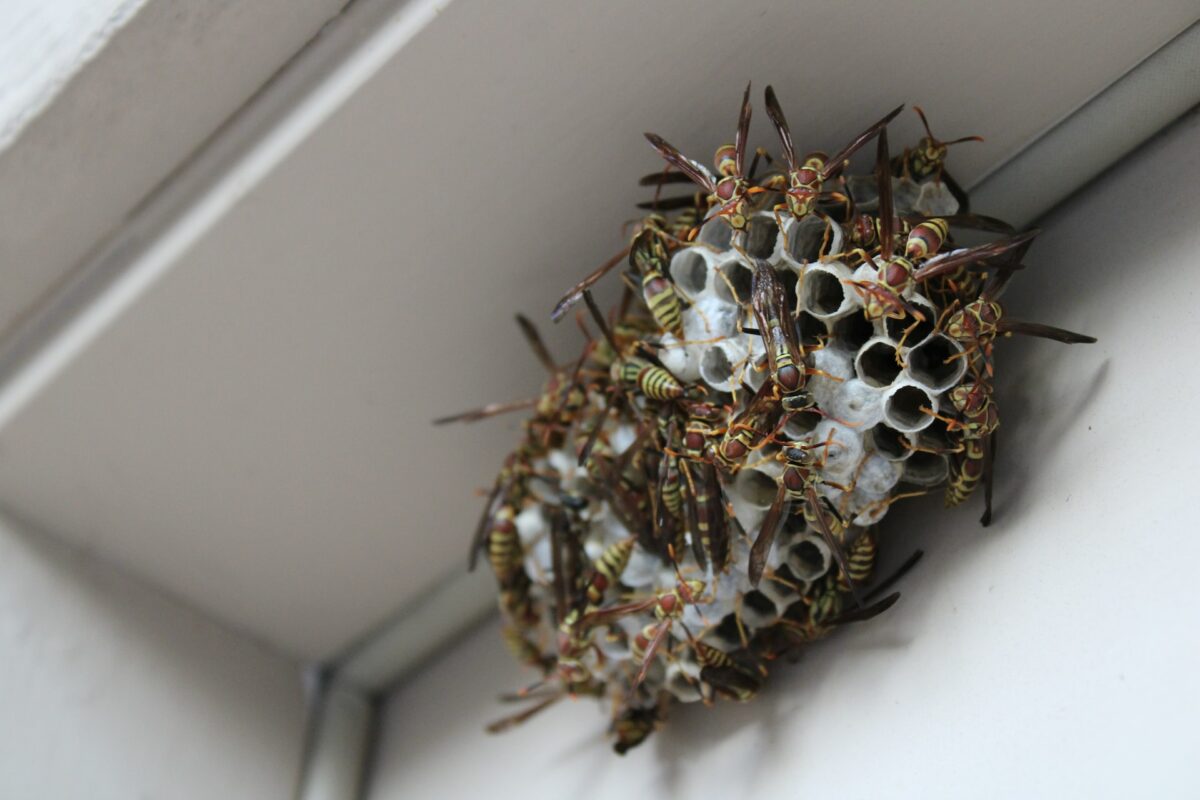
First things first, wasps like to build their homes in protected areas, like trees, bushes, eaves, attics, and even underground. So, keep an eye out for those types of spots.
Next, let’s talk about the shape and size of wasp nests. Wasps are like architects, and each species has its unique design. For example, paper wasp nests are small and open at the bottom, made of a papery material, and often found hanging from a tree or bush.
Hornet nests are bigger, more enclosed, and often round or oval-shaped. You can find them in trees, bushes, or even attached to the side of a building.
Yellow jacket nests are sneaky and hide underground in burrows or cavities. Mud dauber nests are made of mud and are typically found on walls, eaves, or other flat surfaces.
Another way to spot a wasp nest is by observing the activity of the wasps. They’re most active during the day, so keep an eye out for an area with many wasps coming and going during daylight hours.
Besides, you can use your nose to do the job as well. Wasp nests often have a distinct, musty smell. The presence of a strong, musty odor in an area could be a sign of a nearby wasp nest. If you need to find out if there’s a nest around, listen for the buzzing sound that can indicate the presence of a wasp nest.
How Long Does a Wasp Nest Last?
The lifespan of a wasp nest can vary depending on the species of wasp and the environment it is built in.
Some species of wasps, such as the annual yellow jacket, build a new residence each year. These nests are typically only in use for one season, and then they abandon them at the end of the year. The colony dies off, except for the fertilized queen, who will hibernate to start a new colony the following year.
Other species of wasps, such as the paper wasp, will reuse their nest from year to year. These nests can last for several years if undisturbed, and the colony will continue to grow and expand the nest over the years.
It’s also important to note that the size and complexity of the nest will also depend on the species of wasp and the colony’s size. Some wasp species build small and simple nests, while others construct large, complex nests that can hold thousands of wasps.
In summary, the lifespan of a wasp nest can vary from one year to several years, depending on the species of wasp and the environment.
Potential Dangers of a Wasp Nest
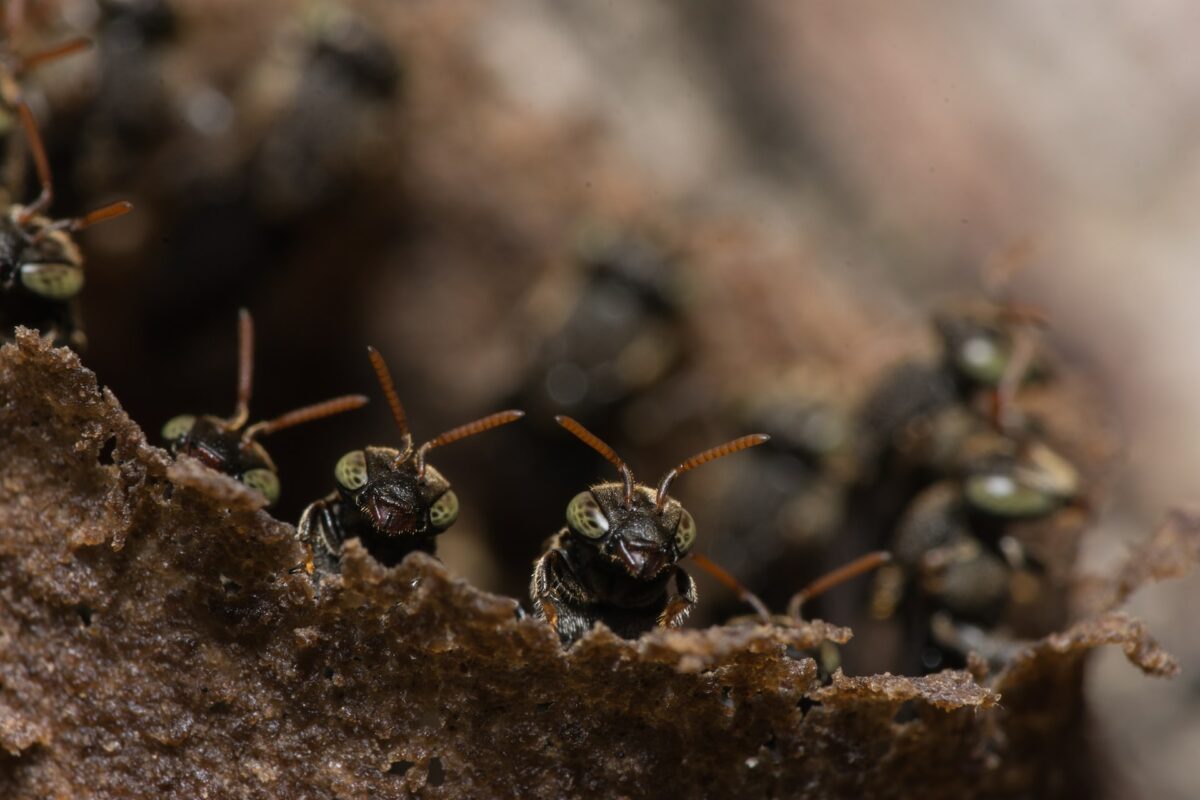
The nests may look pretty cool, but their inhabitants can pack quite a punch if they feel threatened. So, let’s dive into the potential dangers of having a wasp nest nearby.
First off, wasp stings can be a real pain, literally. For some people, it can lead to an allergic reaction, ranging from mild symptoms like redness and itching to severe symptoms like difficulty breathing and even anaphylaxis.
Another thing to remember is that wasps can sting multiple times. Imagine if a whole colony decides to attack; it can lead to severe symptoms such as nausea, dizziness, and fainting.
Also, wasps can cause structural damage to buildings and other structures by making their nests in or on them. This can be a significant problem for homeowners and businesses, which can be costly.
Furthermore, they can be a nuisance when they are located near outdoor recreational areas or places where people gather. This can make it difficult to enjoy outdoor activities such as picnics or outdoor sports.
Lastly, wasp nests can also be a problem for wildlife by disturbing their natural habitats, leading to declining populations of birds and other animals that depend on these habitats.
So, it’s essential to take precautions when dealing with wasp nests and to avoid disturbing or threatening the nest.
How To Safely Remove A Wasp Nest?
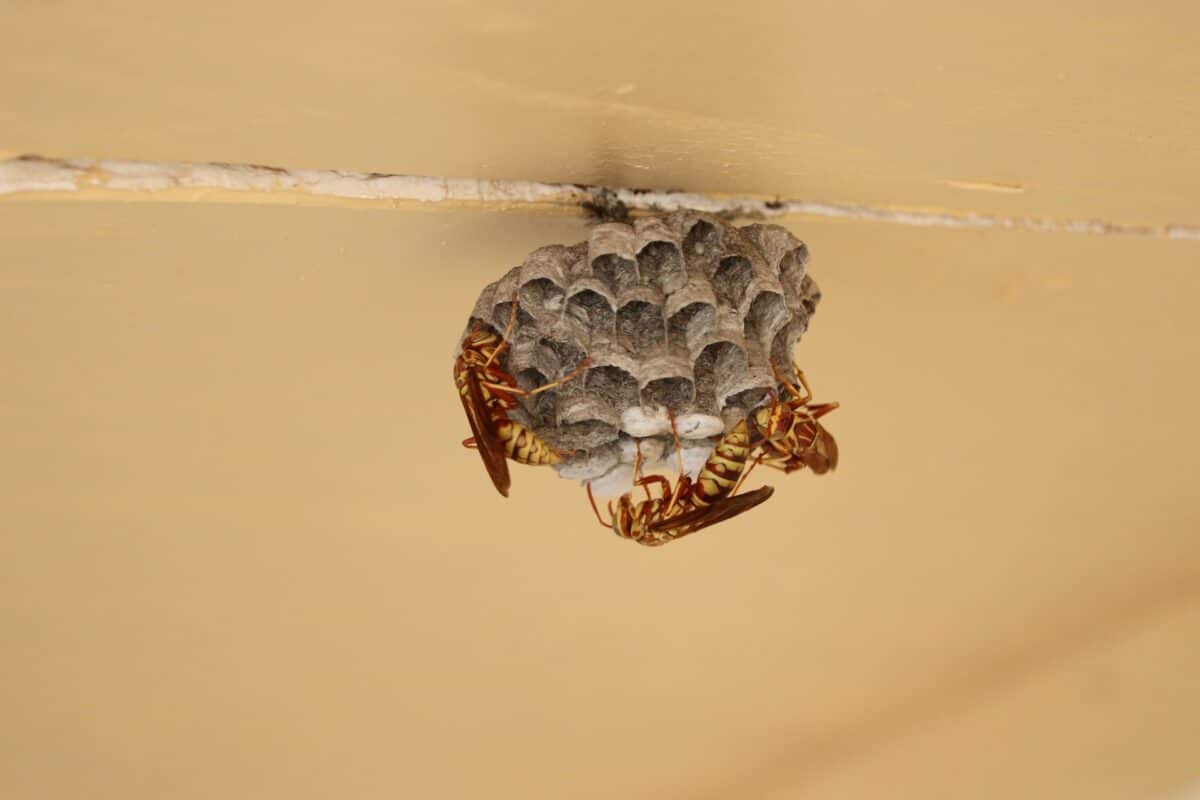
So, you’ve got a wasp nest on your property and want it gone; before you grab the fly swatter and take matters into your own hands, let’s talk about the different ways to safely remove a wasp nest effectively.
Removing a wasp nest can be dangerous and should only be done by a professional with the necessary equipment, experience, and knowledge to remove the nest safely.
One of the most common methods is using an insecticide spray. This method is like a sneak attack. The professional will spray the nest at night when most of the wasps are inside and inactive. This helps to minimize the risk of receiving a sting.
Another method is using a vacuum. This method is used when a nest is in a place that is challenging to reach with an insecticide spray. It is like a powerful suction that sucks up the wasps and the nest.
Using smoke is another effective methodology. This method is chosen when the wasp nest is located in a place that is difficult to reach with an insecticide spray or vacuum. This method is like a smoke bomb that smokes out the wasps and the nest.
Some professionals might use physical removal. When the wasp nest is located in a place that is easy to reach, this method is put in place. Still, it’s not recommended, as it can be dangerous if the wasps feel threatened. Also note this is a short-term solution.
Lastly, there are preventive measures. You can take specific steps to prevent wasps from building a nest in the first place, which is what we’ll take a closer look at now.
If you want to learn more about removing wasp nests, click here.
Tips On How To Keep Wasp Nests Away From Your Property
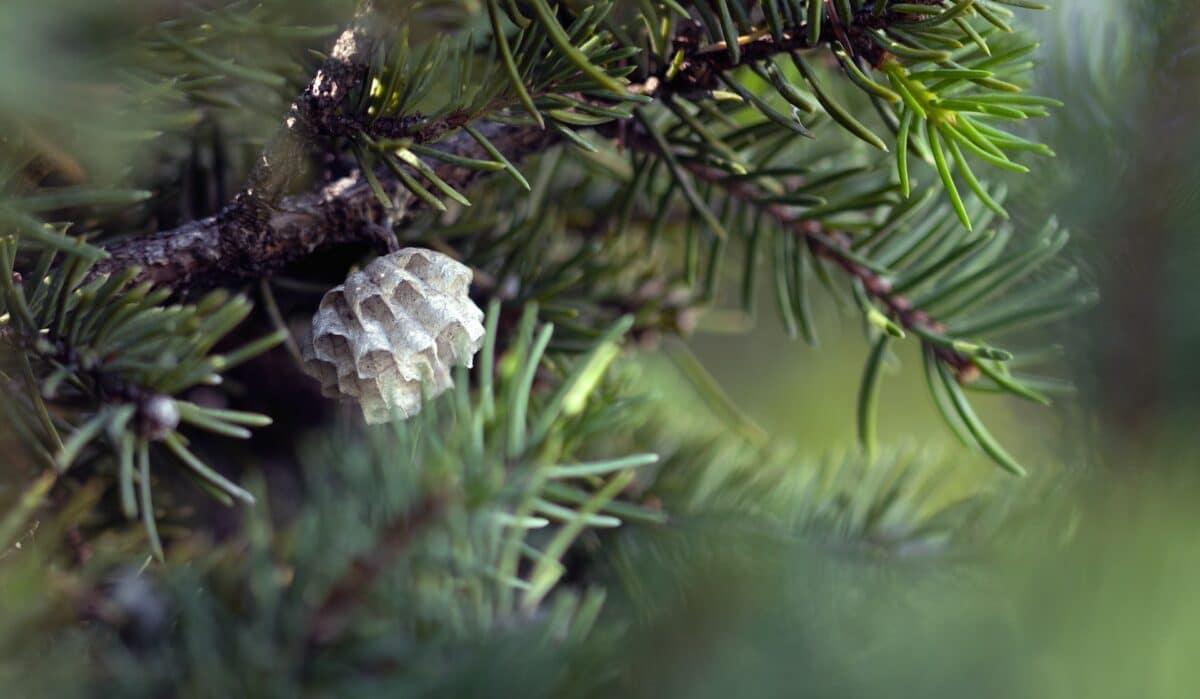
One way of preventing nests from forming on your property is to seal up potential nesting sites. Wasps are sneaky creatures and can slip into the tiniest holes or cracks. So, take a walk around your house, check the walls, roof, and foundation, and then seal any gaps accordingly. Not only will this prevent wasps from entering, but it will also keep other pests out.
Next, keep food and garbage sealed. Wasps love a good feast, and an open trash can or a plate of food left outside is like a buffet to them. So, keep all food and garbage sealed and dispose of it properly.
A great way to catch wasps before they even think about building a home is using wasp traps. You can purchase or make them yourself and hang them around your property. These traps use a sweet-smelling bait to attract wasps and then trap them inside, before they have time to build anything.
Another tip is to eliminate standing water. Wasps require water to build their nests. So, fix any leaks, empty bird baths, and remove any other sources of standing water.
You can also bring in some natural help. Certain plants such as mint, eucalyptus, and citronella can help to repel wasps. Plant them around your property to keep wasps away.
Lastly, keep outdoor areas clean and organized. Regularly cleaning and organizing outdoor spaces will help to reduce the chances of wasps building a nest near your home.
And remember, wasps are most active during the summer months, so take extra precautions during this time.
Key Points
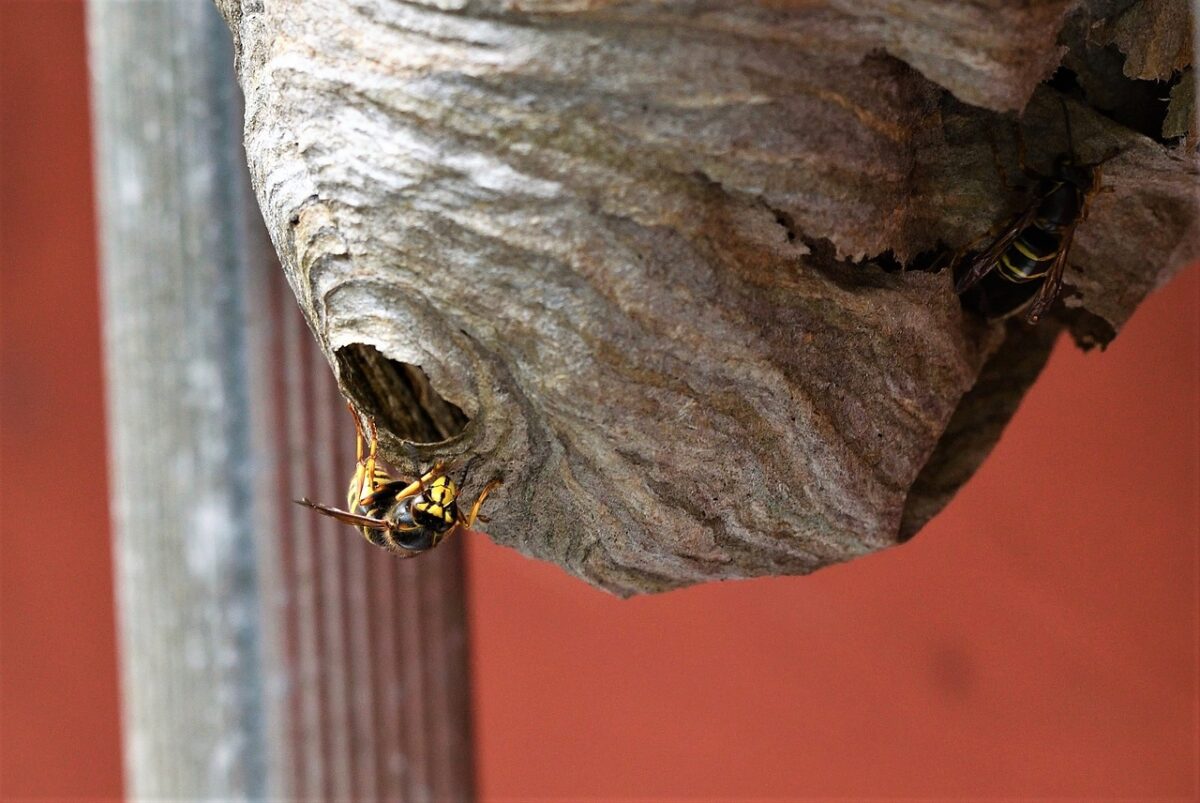
| These fascinating structures are made of a material very similar to “papier-mâché,” a mixture of wood fibers and wasp saliva. |
| Wasp nests are more robust, flexible, and fire-resistant than regular paper. |
| Wasp nests come in various shapes and sizes, depending on the species of wasp that built them. |
| Wasp nests often have a distinct, musty smell. If you notice a strong, musty odor in an area, it could be a sign of a nearby wasp nest |
| You can also listen for a buzzing sound, which can indicate a wasp nest nearby. |
| The lifespan of a wasp nest can vary from one year to several years, depending on the species of wasp and the environment in which it is built. |
| Wasp stings can be a real painful. It can lead to an allergic reaction, ranging from mild symptoms like redness and itching to severe symptoms like difficulty breathing, anaphylaxis, nausea, dizziness, and fainting. |
| Insecticide spray, vacuum, and smoke are few methods that can be used to remove wasp nest. But it is highly recommended to call a professional for such a task. |
The Final Say
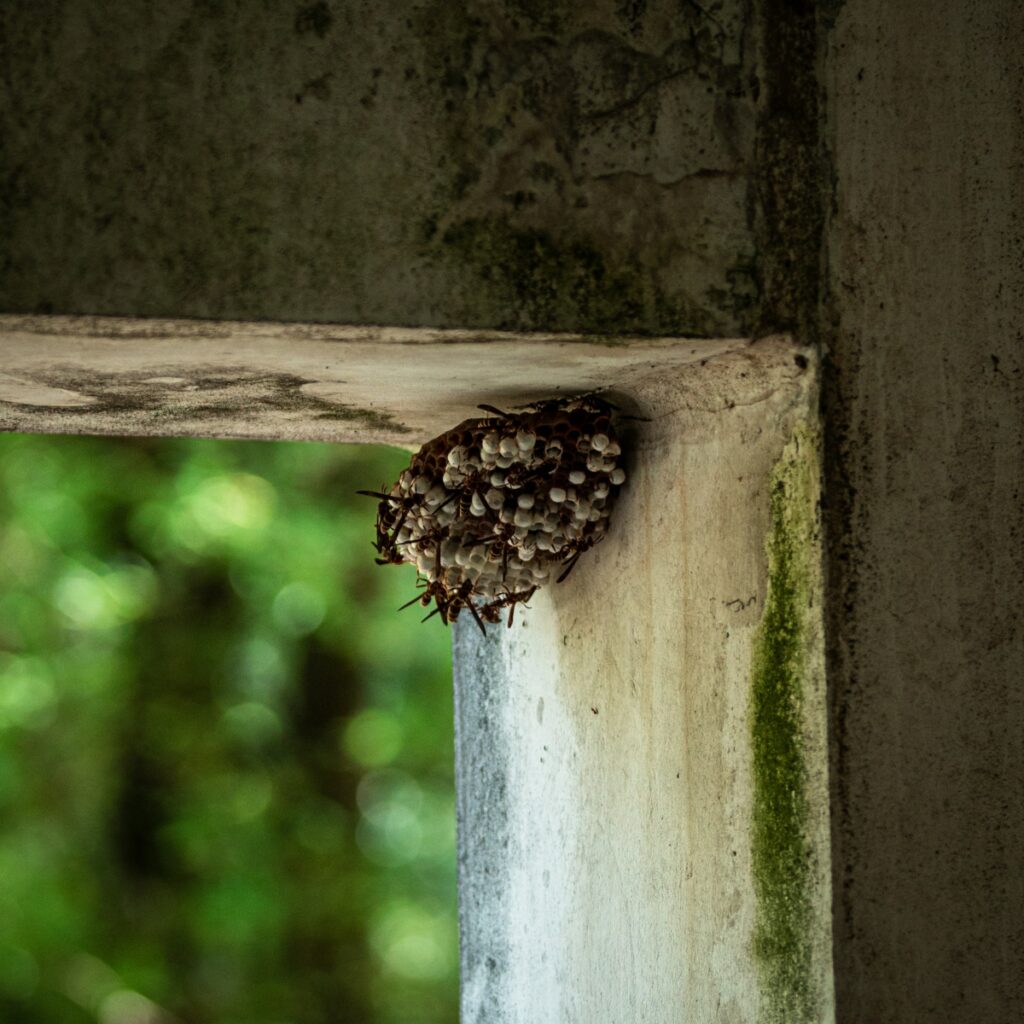
There you have it, a comprehensive look at the incredible world of wasp nests. We’ve covered everything, from the materials used to construct them to the different shapes and sizes of wasp nests and their importance in the ecosystem. Moreover, we even delved into the exciting history of wasp nests and the various uses of their paper-like material over time.
It’s important to remember that while they are an essential part of the ecosystem, they can be dangerous. If you suspect a wasp nest on your property, it’s best to call a professional to remove it safely. However, it’s much easier to prevent the occurrence of them than to deal with the consequences once it’s appeared.
In a nutshell, they’re truly fascinating structures, and we hope this article has given you a newfound appreciation for them. Remember to respect and appreciate these intricate structures, and always call a professional if you suspect a wasp nest on your property. The next time you come across a wasp nest, take a moment to admire the incredible work that goes into building it and its essential role in our ecosystem.
Thank you for reading this article! If your curiosity is still craving more insect-info, take a look at our post about What Moths Eat.
Join our Forum for free today!


